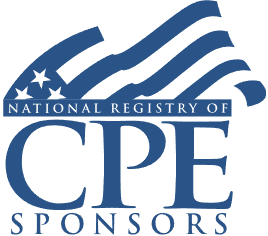GILTI Calculations for Individual U.S. Shareholders: Section 951A

Course Details
- smart_display Format
On-Demand
- signal_cellular_alt Difficulty Level
Intermediate
- work Practice Area
Tax Preparer
- event Date
Monday, October 2, 2023
- schedule Time
1:00 p.m. ET./10:00 a.m. PT
- timer Program Length
110 minutes
-
BARBRI is a NASBA CPE sponsor and this 110-minute webinar is accredited for 2.0 CPE credits.
-
BARBRI is an IRS-approved continuing education provider offering certified courses for Enrolled Agents (EA) and Tax Return Preparers (RTRP).
This course will provide tax advisers with a practical guide to the global intangible low-taxed income (GILTI) provisions. The panel will detail the tax calculations and reporting requirements for taxpayers with GILTI inclusions and describe planning opportunities to minimize the tax impact on individuals with GILTI inclusions.
Faculty

Mr. Neumeyer focuses his practice on international tax issues. In particular, he helps lead CLA’s delinquent international filing practice. Mr. Neumeyer works with clients who have missed international informational reporting requirements and helps mitigate penalty risk by submitting delinquent returns through IRS voluntary disclosure programs. He also works extensively with multinational businesses by helping navigate their international compliance obligations.

Mr. Dokko is a partner in Citrin Cooperman’s International Tax Practice and is based out of the New York office. He practices in all areas of international tax with a focus on inbound and outbound tax planning. He advises clients on U.S. international tax matters, including international tax issues that arise in cross-border M&A, reorganizations, and dispositions. Mr. Dokko has extensive experience in developing, implementing, and reporting tax planning strategies and cross-border restructurings along with advising on issues with respect to U.S. anti-deferral rules, supply chain planning, withholding, tax treaties, financing transactions, and global tax rate reduction. Prior to joining Citrin Cooperman, he was a Principal and Head of Tax at a tax consulting firm in New York City and prior to that, was a Managing Director in the National Tax Office – International of a public accounting firm.
Description
Section 951A requires U.S. shareholders of controlled foreign corporations (CFCs) to include in gross income the shareholder's GILTI for the tax year. Tax advisers must identify the tax consequences for their clients that are U.S. shareholders in CFCs.
GILTI is an anti-deferral regime that may subject U.S. shareholders (as defined in Section 951(b)) of a CFC to tax on all or a portion of the CFC's income. GILTI is calculated under a complex formula but essentially requires U.S. shareholders to include into gross income CFC net income (subject to certain exceptions) less a routine return on certain CFC tangible depreciable property (qualified business asset investment or QBAI) with adjustments for specified interest expense. QBAI generally includes tangible depreciable personal property used to generate CFC tested income and does not include intangible property.
Critical to the tax impact of GILTI is the disparate treatment between corporate and individual taxpayers. C corporations are generally entitled to a Section 250 deduction for GILTI and the Section 78 gross-up attributable to the GILTI inclusion and an indirect foreign tax credit for certain foreign income taxes paid or accrued by the CFC subject to foreign tax credit limitation rules. Absent a Section 962 election, individual U.S. shareholders aren't eligible for these benefits, resulting in a much higher tax impact on individuals than on corporate entities.
Listen as our expert panel provides a thorough and practical guide to the mechanics of identifying, calculating, and reporting GILTI income for individual taxpayers.
Outline
- Section 951A overview
- Treatment of domestic partnerships and their partners
- Planning opportunities for individuals to minimize the tax impact of GILTI
- GILTI high-tax exclusion
- Section 962 election considerations
Benefits
The panel will review these and other essential matters:
- When an individual is subject to tax under IRC 951A
- Calculating QBAI
- The application of GILTI to domestic partnerships and their partners
- The GILTI high-tax exclusion
- The benefits and cons of a Section 962 election
NASBA Details
Learning Objectives
After completing this course, you will be able to:
- Determine whether an individual is subject to GILTI tax under IRC 951A
- Calculate GILTI on CFC income
- Recognize the changes to Subpart F treatment of CFCs
- Identify how the new tax law increases the amount of CFC income currently taxable to U.S. shareholders in some circumstances
- Establish whether an IRC 962 election is beneficial or could result in increased taxation
- Ascertain the potential impact of the GILTI high tax exclusion
- Field of Study: Taxes
- Level of Knowledge: Intermediate
- Advance Preparation: None
- Teaching Method: Seminar/Lecture
- Delivery Method: Group-Internet (via computer)
- Attendance Monitoring Method: Attendance is monitored electronically via a participant's PIN and through a series of attendance verification prompts displayed throughout the program
- Prerequisite: Three years+ business or professional experience at mid-level within the organization, preparing complex tax forms and schedules. Specific knowledge and understanding of international taxation, deferred foreign-source income, earnings and profits, controlled foreign corporations, specified foreign corporations, and repatriation of deferred foreign earnings; familiarity with accumulated cash and non-cash retained earnings and profits and netting of earnings and profits positions.

Strafford Publications, Inc. is registered with the National Association of State Boards of Accountancy (NASBA) as a sponsor of continuing professional education on the National Registry of CPE Sponsors. State boards of Accountancy have final authority on the acceptance of individual courses for CPE Credits. Complaints regarding registered sponsons may be submitted to NASBA through its website: www.nasbaregistry.org.

Strafford is an IRS-approved continuing education provider offering certified courses for Enrolled Agents (EA) and Tax Return Preparers (RTRP).
Unlimited access to premium CLE courses:
- Annual access
- Available live and on-demand
- Best for attorneys and legal professionals
Unlimited access to premium CPE courses.:
- Annual access
- Available live and on-demand
- Best for CPAs and tax professionals
Unlimited access to premium CLE, CPE, Professional Skills and Practice-Ready courses.:
- Annual access
- Available live and on-demand
- Best for legal, accounting, and tax professionals
Related Courses

Mastering Form 5472: Filing Requirements for Foreign Individuals, LLCs, and Companies
Friday, May 30, 2025
1:00 p.m. ET./10:00 a.m. PT

Charitable Remainder Trusts: Utilizing CRATs and CRUTs to Minimize Income and Transfer Tax, SECURE 2.0 QCDs
Thursday, May 29, 2025
1:00 p.m. ET./10:00 a.m. PT

LLC and Partnership Purchases: Entity Interests vs. Asset Sales, Basis Adjustments, Elections, Tax Reporting
Thursday, May 15, 2025
1:00 PM E.T.
Recommended Resources
How CPE Can Bridge the Gap Between What You Know and What You Need to Know
- Career Advancement